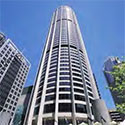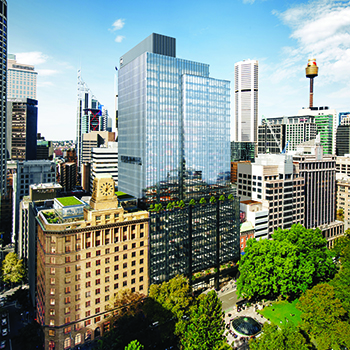Filter by
You must be a CTBUH Member to view this resource.
Sixty Martin Place
Building
Completed, 2019
2000
office
concrete
6 Star Green Star; 5.0 Star NABERS Energy Rating; WELL Platinum Certification
137.1 m / 450 ft
33
3
78
17
6 m/s
45,823 m² / 493,235 ft²
Usually involved in the front end design, with a "typical" condition being that of a leadership role through either Schematic Design or Design Development, and then a monitoring role through the CD and CA phases.
The Design Engineer is usually involved in the front end design, typically taking the leadership role in the Schematic Design and Design Development, and then a monitoring role through the CD and CA phases.
The Design Engineer is usually involved in the front end design, typically taking the leadership role in the Schematic Design and Design Development, and then a monitoring role through the CD and CA phases.
Other Consultant refers to other organizations which provided significant consultation services for a building project (e.g. wind consultants, environmental consultants, fire and life safety consultants, etc).
These are firms that consult on the design of a building's façade. May often be referred to as "Cladding," "Envelope," "Exterior Wall," or "Curtain Wall" Consultant, however, for consistency CTBUH uses the term "Façade Consultant" exclusively.
Material Supplier refers to organizations which supplied significant systems/materials for a building project (e.g. elevator suppliers, facade suppliers, etc).
You must be a CTBUH Member to view this resource.
Usually involved in the front end design, with a "typical" condition being that of a leadership role through either Schematic Design or Design Development, and then a monitoring role through the CD and CA phases.
The Design Engineer is usually involved in the front end design, typically taking the leadership role in the Schematic Design and Design Development, and then a monitoring role through the CD and CA phases.
The Engineer of Record takes the balance of the engineering effort not executed by the “Design Engineer,” typically responsible for construction documents, conforming to local codes, etc.
The Design Engineer is usually involved in the front end design, typically taking the leadership role in the Schematic Design and Design Development, and then a monitoring role through the CD and CA phases.
The Engineer of Record takes the balance of the engineering effort not executed by the “Design Engineer,” typically responsible for construction documents, conforming to local codes, etc.
The CTBUH lists a project manager when a specific firm has been commissioned to oversee this aspect of a tall building’s design/construction. When the project management efforts are handled by the developer, main contract, or architect, this field will be omitted.
The main contractor is the supervisory contractor of all construction work on a project, management of sub-contractors and vendors, etc. May be referred to as "Construction Manager," however, for consistency CTBUH uses the term "Main Contractor" exclusively.
Other Consultant refers to other organizations which provided significant consultation services for a building project (e.g. wind consultants, environmental consultants, fire and life safety consultants, etc).
These are firms that consult on the design of a building's façade. May often be referred to as "Cladding," "Envelope," "Exterior Wall," or "Curtain Wall" Consultant, however, for consistency CTBUH uses the term "Façade Consultant" exclusively.
Material Supplier refers to organizations which supplied significant systems/materials for a building project (e.g. elevator suppliers, facade suppliers, etc).
Best Tall Building 100-199 meters 2021 Award of Excellence
2021 CTBUH Awards
Interior Space Award 2021 Award of Excellence
2021 CTBUH Awards
Façade Engineering Award 2021 Award of Excellence
2021 CTBUH Awards
60 Martin Place
9 March 2016 - Event

31 October 2017 | Sydney
Helen Lochhead of the University of New South Wales is interviewed by Chris Bentley during the 2017 CTBUH Australia Conference.

20 March 2020
Tall + Urban Innovation 2020: Dominant Trends
CTBUH Research
Providing a global overview of tall building development, design and construction, the CTBUH Awards Program and related Tall + Urban Innovation Conference annually survey projects,...

31 October 2017 | Sydney
Helen Lochhead of the University of New South Wales is interviewed by Chris Bentley during the 2017 CTBUH Australia Conference.

31 October 2017 | Sydney
Peter Halliday of Siemens Building Technology is interviewed by Chris Bentley during the 2017 CTBUH Australia Conference.

30 October 2017 | Sydney
Mark Tait of Investa Property is interviewed by Chris Bentley during the 2017 CTBUH Australia Conference.

30 October 2017 | Sydney
The Role of Design Competitions in Shaping Sydney's Public Realm
Tall buildings often take more than they give back, frequently exacerbating local environmental conditions, overshadowing streets and public spaces, creating wind tunnels, and impacting the...

20 March 2020
Tall + Urban Innovation 2020: Dominant Trends
Providing a global overview of tall building development, design and construction, the CTBUH Awards Program and related Tall + Urban Innovation Conference annually survey projects,...

30 October 2017
The Role of Design Competitions In Shaping Sydney’s Public Realm
Since 2000, through the City of Sydney’s Competitive Design Policy (CDP), the quality of major projects in the city has been improved significantly, mediating the...
Subscribe below to receive periodic updates from CTBUH on the latest Tall Building and Urban news and CTBUH initiatives, including our monthly newsletter. Fields with a red asterisk (*) next to them are required.
View our privacy policy